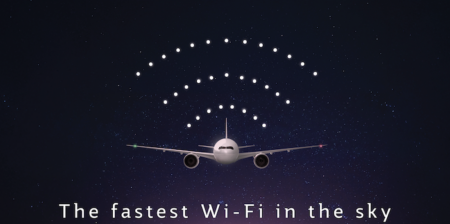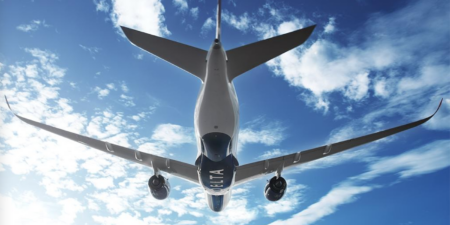April 14, 2015: What do the ultimate luxury experience in commercial aviation, an all-new regional jet interior, a super-fast inflight internet service and a trash compactor have in common? They are all winners in the most exciting Crystal Cabin Awards yet, with some real cabin innovations being recognized by the jury.
In no particular order, here are the winners:
Premium Class & VIP
Winner: Etihad Airways
To anyone interested in airline travel, the winner of this category needs little introduction. The upper deck of Etihad’s A380 is just incredibly luxurious, truly bringing a feel of a boutique hotel or even private jet travel into commercial aviation. What impresses isn’t just the opulence though: it is how the economics stack up. Even the Residence, with its living room, shower room and bedroom, is no halo product, having been fitted in a space that would not have generated any revenue than one of its lower-priced Apartments. And according to Calum Laming, VP of guest experience at Etihad, the Residence – even with its one-way fare of US$18,000 from London to Abu Dhabi (sold as a double occupancy room, rather than two seats) – is proving very popular, and is booked every day this week.
Want to know more about the Etihad A380 upper deck, including the Residence, the Apartments, the fore-aft business studios, and how the upper deck floor had to be reengineered to accommodate the gorgeous main galley? We have an in-depth report HERE, including input from the three design consultancies behind the project.
Runners up: Qatar Airways’ A380 first-class cabin and premium lounge; Chair by Lufthansa Technik
Industrial Design and Visionary Concepts
Winner: Embraer E-Jet E2
Seeking to maintain and strengthen its strong position in the 70-130 seat narrow-body market, Embraer decided that for its next-generation E-Jet E2, a completely clean-sheet approach was required. From the moment you step into the cabin – co-created with PriestmanGoode – you are immersed in an environment that is uniquely Embraer.
The cabin design is now entering its third year of development, and everything from the sidewall panels, ceiling panels, overhead bins, PSUs, lighting, IFE, seating, galley and lavatory have all been conceived to enhance the passenger experience and make the E2 an efficient aircraft to maintain. Key to this second factor is that the entire cabin is modular, allowing for quick and low-cost reconfiguration – attractive qualities to the critical customer demographic of banks and leasing companies.
The E2 is a worthy winner. For more details on the cabin, see our in-depth feature HERE.
Runners up: The Jazz economy seat concept, created by Panasonic Avionics, B/E Aerospace, Teague and Formation Design; and Boeing’s 777 Premium Arch, co-developed with Teague. To see a beautiful application of the Premium Arch, read the China Airlines B777 feature in our March 2015 issue HERE.
Passenger Comfort Systems
Winner: ViaSat
16 months after launch, ViaSat’s Exede In The Air in-flight internet has proved itself in service – and has now been recognized in the Crystal Cabin Awards. Together with Thales, ViaSat launched the Exede In The Air service on December 12, 2013 on JetBlue. Since then, ViaSat says the service has achieved some milestones, including attracting more than four-times the average number of passengers to use the service on each flight compared to the nearest competitor (though the service is free to use), with take rates on flights more than three hours approaching 40%; over 2.5 million personal electronic devices connected in the first year; data use per passenger doubling since the first flights; and 20% of all data consumed being used for streaming applications, a number that the company says is increasing each month.
The reason for the success? The service provides similar speeds to those passengers enjoy at home (12Mbps per passenger), and this speed doesn’t degrade when more passengers log on. The satellite-based system can also operate on the ground, enabling airlines to take advantage of gate-to-gate wi-fi connections.
The service is also fitted to United aircraft, and is coming soon to El Al Airlines, with the first certification flights planned for mid-2015. The only downside of the system is that it is not currently available worldwide, but in mid-2016 the ViaSat-2 satellite is expected to launch, which will further expand capacity and extend service to Transatlantic, Central American, Caribbean, and European routes.
Runners up: Lufthansa Systems’ BoardConnect InSeat system; and Recaro’s Ultimate Passenger Experience seat, co-developed with Panasonic Avionics and Teague
Materials & Components
Winner: Sabic
Aircraft interior designers are often restricted by the clarity and compliance limitations of the transparent materials currently available to them. With 80% light transmission – the highest level of light transmission available in an OSU-compliant sheet material today – SABIC’s clear Lexan XHR2000 sheet is a pioneering option for aircraft interiors with this level of transparency, while still meeting OSU 65/65 heat release and typical industry FST requirements (FAR25.853, BSS7239, ABD0031).
The sheets are ideal for application in anything from security partitions, windows, trolleys and mirrors. The sheets are currently being used by Delta, and by China Eastern in its first class window panels, and are currently being evaluated by Qantas.
Runners up: Reliant Worldwide Plastics lightweight seatback; and Fraunhofer Institute’s Smart-Fluox oxygen mask deployment system.
Greener Cabin, Health, Safety & Environment
Winner: B/E Aerospace Solar Eclipse
Solar Eclipse is a simple but potentially very useful idea for aircraft that do not already have in-seat power. A thin solar cell foil is inserted into each window blind, which provides power to two USB ports in the window surrounds, enabling passengers to recharge electronic devices during the flight – even tablets. The system is still under development, including ideas for routing power to center seats, but the manufacturer is confident about gaining FAA approval.
Runners up: CTT’s cabin humidity system; Phitek’s reusable economy headphones.
Passenger Comfort Hardware
Winner: Sii Deutschland
Where the fuselage narrows at the rear of a narrow-body aircraft, requiring the LOPA to go from three to two seats on each side, this company’s SANTO concept sees a special seat installed, which is one-and-a-half times the normal seat width, making use of the normally wasted space. This seat can then be assigned to large passengers or divided and assigned to passengers with small children. SANTO stands for ‘Special Accommodation Needs for Toddlers and Overweight Passengers’.
Runners up: Boeing Space Bins (details of the launch customer HERE); Smart Tray’s tray table electronic device holder.
University
Winner: Hamburg University of Applied Sciences (HAW Hamburg)
The mobile vacuum trash container – co-developed with Airbus – convinced the jury. Marc Spille from the Hamburg University of Applied Sciences (HAW Hamburg) had already collected the Hamburg Aviation Young Talent Award for the design at the end of 2014. His design uses the vacuum power used in the lavatory to contract the rubbish bags in the galley in seconds. There are of course issues with sharp objects and liquids, but Spille says that suitable bags are available to prevent tearing or spillage.
Runners up: College for Creative Studies’ ‘Escape’ economy seat IFE visor (a few more details HERE); TU Delft’s ‘Enable’ concept, which uses the surface of the folding table as an interactive display.




